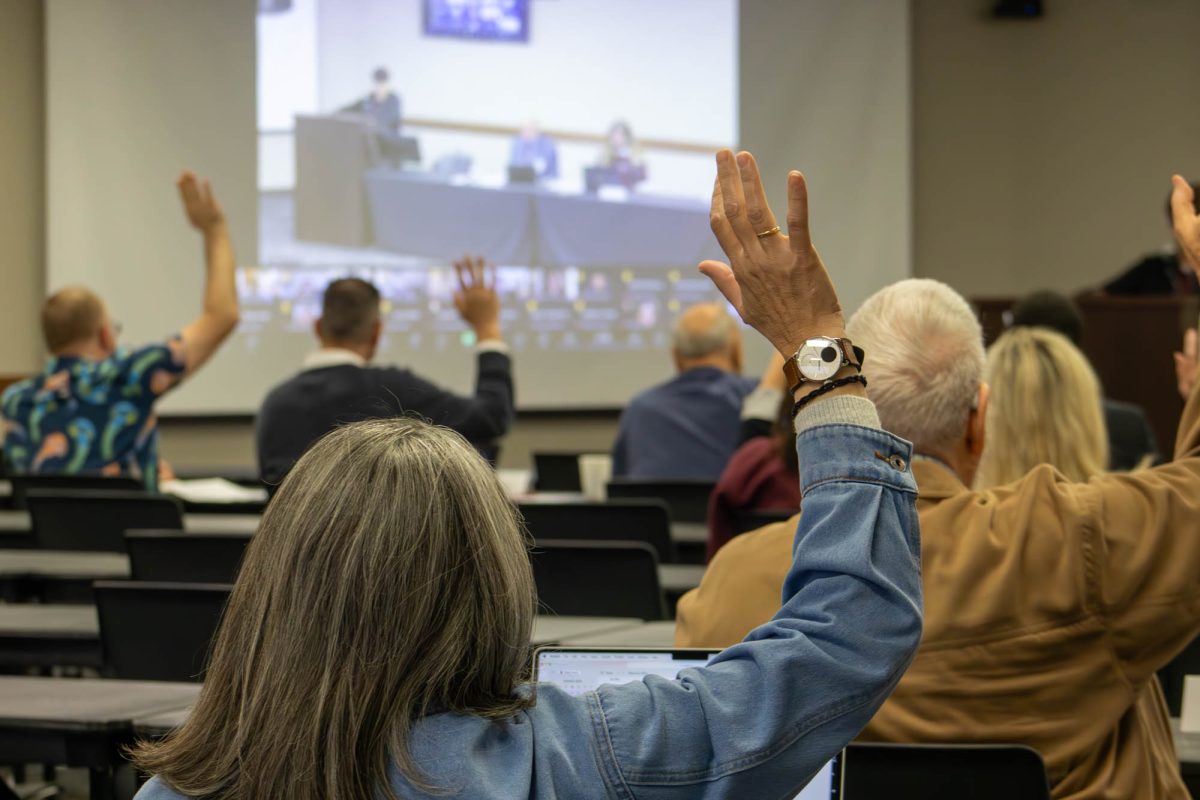Protests continued Tuesday in the streets of Baltimore in response to the death of Baltimore local Freddie Gray, who died while in Baltimore police custody, stirring unrest among the city’s predominantly black population.
In Gray’s name, peaceful demonstrations took place over the weekend. Some have now turned violent, resulting in burned cars, cases of shoplifting and police injuries.
Associate sociology professor Wendy Moore said she has seen a familiar pattern of backlash across the United States recently.
“What’s going on is similar to what has been happening in other cities, which is a reaction to the policing of black communities,” Moore said. “The people of these communities are very under-resourced [and] have limited to no access to jobs, good education and transportation. The conditions of these protests and the anger come along with extreme deprivation and poverty.”
Moore said black people are “over-policed and under-protected.”
“Police have shown they are willing to see blacks as violent threats immediately,” Moore said. “They respond to really anything — any actions –— from blacks with violent force, often resulting in injuries, deaths.”
God’swill Osa, molecular and cell biology sophomore and member of the Minority Association of Pre-Med Students, said while anger at the looters is expected, the unrest in the city has been building for years.
“It doesn’t take a lot to have utter disdain for the actions of looters and those who destroyed businesses of hard-working individuals,” Osa said. “But the responses stem from decades of systematic oppression of urban inner cities. If you back an injured dog into a corner, the dog is going to lash out and hurt you — and maybe hurt itself in the process.”
Psychology junior Jamal Piper said while the physical and economic effects of riots are clearly damaging, it is irresponsible to focus on the portion of the demonstrations involving looting and irrational actions.
“Baltimore has a reported history of power abuse from officers whose duty should be to protect and serve all,” Piper said. “With many residents, being black and the majority of reported misconduct coming from them, these citizens likely feel targeted and regard legal authority figures with distrust and fear.”
Moore said it is often hard to grasp the reality of racial poverty and inequality with an outside perspective.
“It’s easy to preach patience and nonviolence if you don’t have friends or family who get racially profiled and regularly harassed,” Moore said. “But when people you care about are constantly exposed to violence or are living with constant threat, it makes you angry.”
The 25-year-old Gray was arrested for possession of a switchblade.
“Possession is definitely something that warrants punishment from the law,” said Christal-Joy Turner, psychology senior and NAACP president for the Texas A&M chapter. “But it does not warrant a death sentence.”
Moore said by overplaying violence, the media is downplaying the relevance of racism.
“Discourse comes from the media,” Moore said. “The way this incident is being portrayed minimizes its seriousness. How much longer can you ‘wait’ for justice?”
Turner said the media portrayal of Baltimore has been displayed under a double standard.
“When people are upset about sports games, they go trash the streets, set things on fire, but ‘they’re just having fun,’” Turner said. “When people are upset about racial injustice and turn to the streets, they are labeled as destructive thugs and monsters.”
While Turner said groups are working to raise awareness about police brutality, she said at times knowledge alone is not the only solution.
“Hashtags against these occurrences of systematic racism change every few weeks but it’s always the same story,” Turner said. “There need to be laws implementing change and protecting everyone. Police are trained to be good and many are, but those who are not must be held accountable.”
Baltimore unrest a symptom of ‘over-policed and under-protected’ community, prof says
April 28, 2015
0
Donate to The Battalion
$2790
$5000
Contributed
Our Goal
Your donation will support the student journalists of Texas A&M University - College Station. Your contribution will allow us to purchase equipment and cover our annual website hosting costs, in addition to paying freelance staffers for their work, travel costs for coverage and more!
More to Discover








